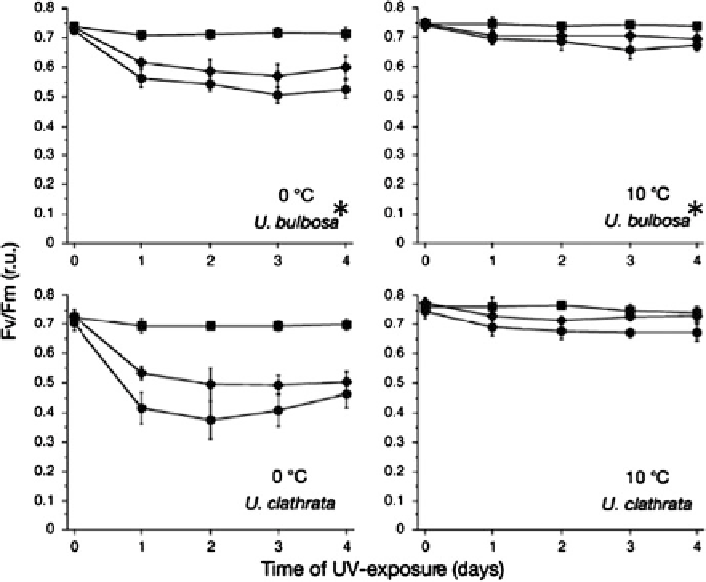Biology Reference
In-Depth Information
Fig. 20.1
Interactive effects of UV exposure and temperature on optimum quantum yield of
photosynthesis (
F
v
/
F
m
):
Ulva bulbosa,
(*now also referred to as
U. hookeriana
) (isolated from
King George Island, Antarctica) and
U. clathrata
(isolated from PuertoWilliams, Tierra del Fuego,
South America) have been exposed to identical irradiances of PAR, UVA, and UVB at 0
and 10
C;
(
filled square
) PAR alone, (
filled diamond
) PAR
þ
UVA, (
filled circle
) PAR
þ
UVA
þ
UVB
(Rautenberger and Bischof
2006
)
inhibition was compensated by temperatures, which are higher than those usually
encountered at its natural growth sites; (2) in the cosmopolitan species
U. clathrata
exposure to lower temperatures resulted in strongly pronounced UV effects, even
stronger than in the more southern species
U. bulbosa
, which might be based on
higher SOD activities measured in the latter species, presumably as a result of
higher cellular SOD concentrations. It has been described as a common adaptive
feature in Polar organisms to increase respective enzyme concentrations in order to
compensate for activity loss at low environmental temperatures. However, temper-
ature compensation of UV effects is evidently only possible within the temperature
tolerance range of the species under investigation.
A further aspect of environmental change has raised new concerns on marine
ecosystem functions and resulted in further research activities with respect to the
potential impacts of ocean acidification (see Chap.
19
by Roleda and Hurd).
Hitherto, there is very little information available on how the impacts of UV
radiation and changing pH levels might
interact with respect
to seaweed

